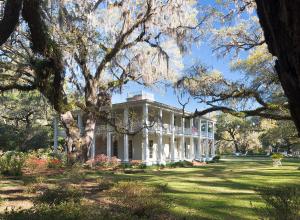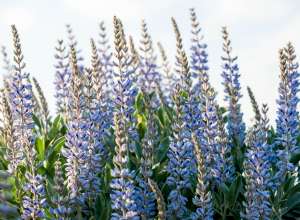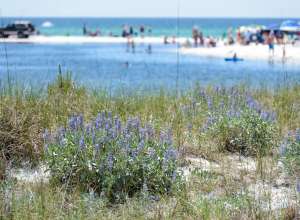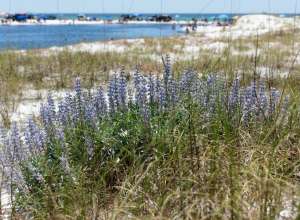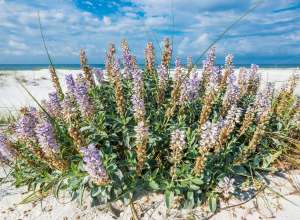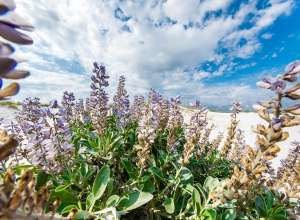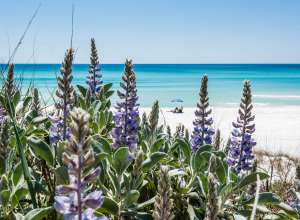About this gallery
Blue lupines light up SoWal every Spring. Along the scenic roads and across the beaches, the delicate and beautiful plant is a signature piece of the South Walton landscape.
Their roots help to preserve and protect our dune system. There are more than 200 different types of wild lupine species in North America, coming in almost every color — the Lupinus Westianus variety found in South Walton ranges from pale lavender to bright purplish blue, depending on location and time during its bloom cycle.
Though the blue lupine is usually referred to as a flower, it’s actually part of the legume family. It has small, delicate petals, grey textured fruits, and pockets full of dark brown seeds. PLEASE do not pick the flowers - it prevents the plants from thriving and surviving. And they do not transplant, so don't even think about digging them up!
Our Blue Lupine is a biennial plant, taking two full years to bloom. The plant thrives in sandy, acidic soil, and has far-reaching roots that help it stay grounded in loose and sandy soil.
The Lupinus Westianus is listed as “near threatened” with protected populations living in Topsail Hill Preserve State Park and Deer Lake State Park. Make sure you help preserve South Walton's Blue Lupine by looking, but not touching.
As local lore has it - the first sailors arriving to our shores spotted blue lupine covering our massive dunes and thought they looked like Blue Mountains. Thus, Blue Mountain Beach was born!


